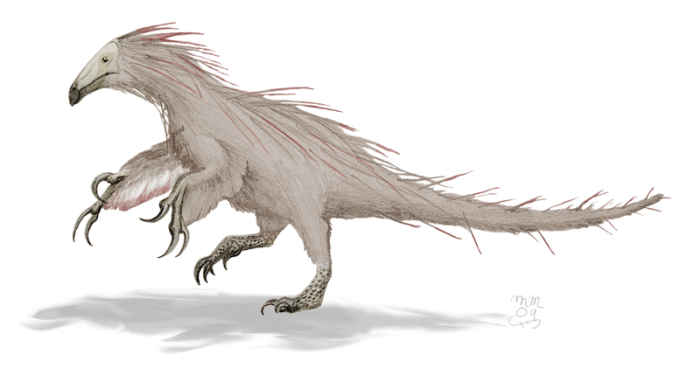Rare Fossilized Footprints Belonging to Nightmarish Dinosaur Found in Canada
The footprint belongs to a predatory dinosaur described as "a cross between a hallucinogenic dream and your worst nightmare."

Combing through the Six Peaks dinosaur track site in British Columbia, Canada, paleontologists discovered a footprint which hasn't been observed anywhere else in the world.
The print belongs to a four-toed meat-eating early Cretaceous-era dinosaur known as Therizinosaur, according to Richard McCrea of the Peace Region Palaeontology Research Centre. Based on the near 55 centimeter-long tracks, the dinosaur is estimated to have been around the height of a small Tyrannosaurus Rex or the average telephone pole.
The dinosaur differs from other carnivorous dinosaurs by the virtue of having had four functional toes; the others usually had three major digits on their feet, reports CBC News.
"Most of the meat-eating dinosaurs had three functional toes. They had remnants of another two, but those did not usually make contact with the ground," McCrea said on a TV program. "So, when I say four functional digits, I mean all four toes are major digits."
The therizinosaurus' track, which is currently being analyzed for peer review, was not the only discovery made at the B.C. site; paleontologists also discovered two sets of prints which they think belong to brontosauruses -- gigantic long-necked herbivorous who roamed the Earth during the late Jurassic period.
The site which housed these incredible finds for eons was first discovered in 2008 but its location was kept secret until officials could secure the resources necessary to protect and excavate it. Known as the Six Peaks track site, located west of Hudson's Hope in northeast B.C., it was publicly unveiled in 2016 and has helped paleontologists to better understand the prehistoric life that existed in British Columbia.
"That is the northernmost record of that group of dinosaurs living in North America and it is very likely that it's the northernmost record of them in the world," McCrea said.
There are many more discoveries yet to be made at this site which is one of the most diverse of its kind in the world. Currently, the 700 square meters of the site which have been uncovered have already yielded 1,200 tracks belonging to at least a dozen different creatures. McCrea and his team plan to triple the exposed area over the coming years in the hopes of finding more revelatory discoveries like this one.





























